Since early 2000's both production and distribution of music has changed radically. While recorded music used to be something, you either heard via broadcast media (radio and tv), bought on/copied to physical media (records, MC's, CD's etc.) or downloaded illegally (Napster etc.), we now have multiple ways for hearing, editing and publishing music online. On every level, from the most amateurish to the most professional.
This process has been described from a wide range of perspectives, but only little has been published on archiving. Despite the profound changes, legal deposits of music have been limited to physical items until recently in most countries. Thus, the question is to what extend this so-called digital music revolution was/is saved or not?
This paper is based on the results of a research project conducted by the Royal Danish Library. The main purpose is to evaluate the collecting activities of Danish music from the early 2000s on forth. As the responsibility for all online sources is covered by Danish Web Archive (Netarkivet), the music is also a part of that scope. Therefore, the project was highly focused on these collections.
The project was based on a comparative study of three different cases representing different mediascapes in the timeline from the early 2000's to the current:
1) “Movie Klip” by Nephew (2003) – representing the download era; just before the establishment of the Danish web archive (Netarkivet, 2005).
2) “Malene” by Sys Bjerre (2008) - representing the early years of web 2.0 and streaming; three years into of the Danish web archive activities(Netarkivet, 2005).
3) “7 Years” by Lukas Graham (2015) – representing the present mediascape, dominated by social media and streaming, Netarkivet approaching its 20 years anniversary.
The three songs were all massive hits to the artists, the two first locally and the third globally. In all three cases, the Internet was central to the spreading of the song, but in very different ways due to the changing technologies.
Using a variety of methods and tools, including deep searches in Netarkivet and various tools (both shrink wrapped and custom built) for scraping social media and streaming services, I have registered as many versions of the three songs as possible in the respective mediascapes, analyzed the context and tested the archival status of each version. Thereby, it is possible to describe the changes from an archival perspective and lay the ground for future collecting strategies.

 PDF version
PDF version
